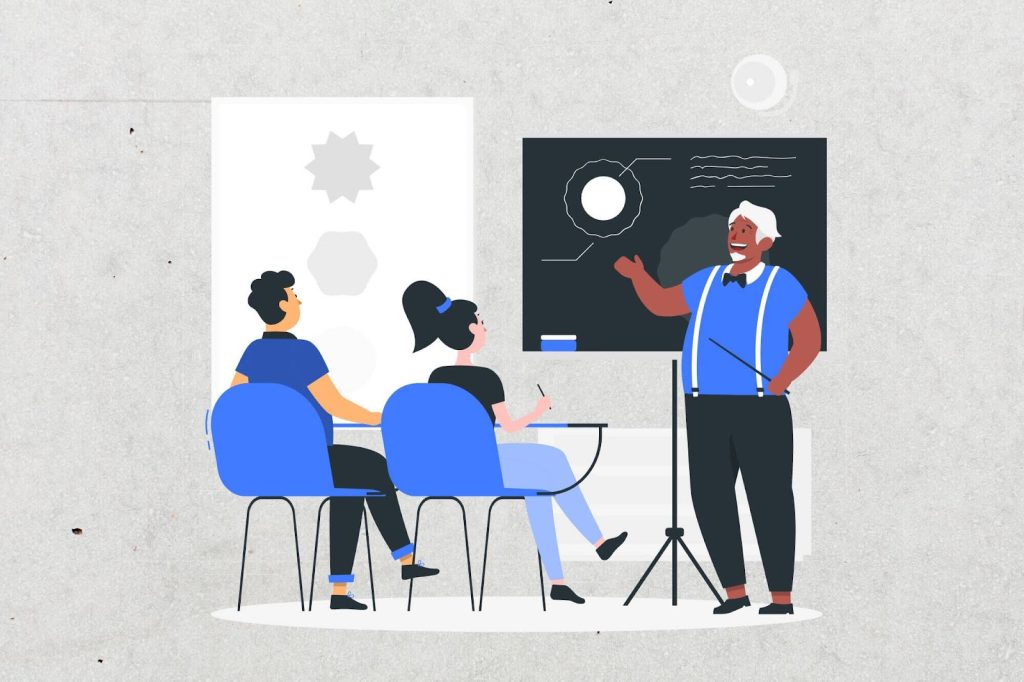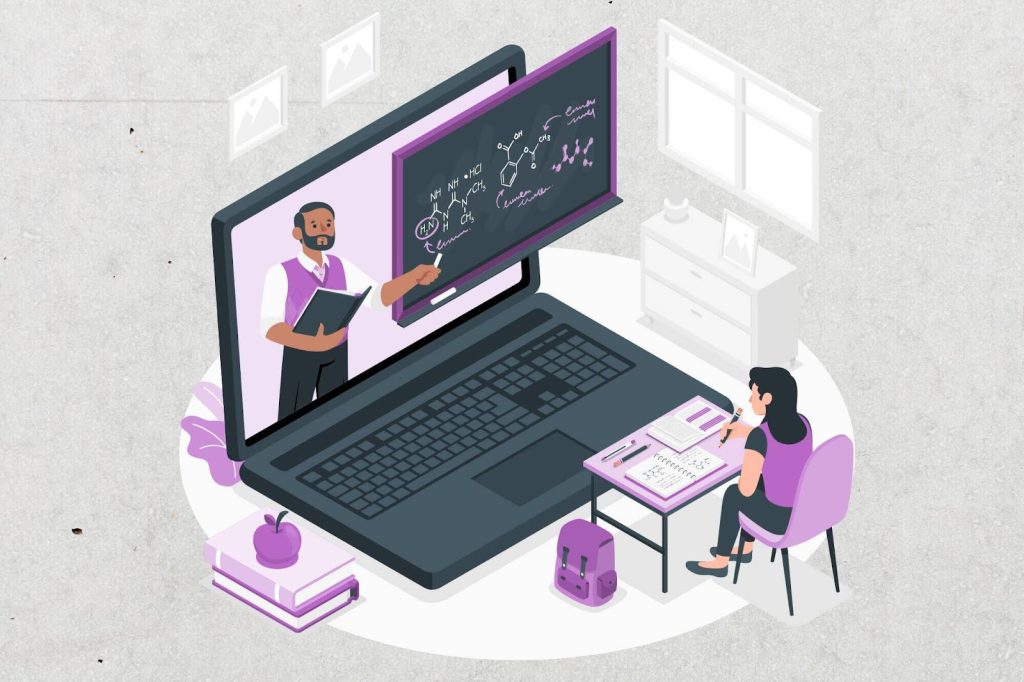Quick Overview
CPD (Continuing Professional Development) in education helps teachers maintain and improve their professional skills, knowledge, and teaching effectiveness. It supports educators in staying updated with new curriculum changes, technologies, and teaching methods to provide high-quality learning experiences.
This blog will cover:
✅ What CPD is and how it supports lifelong learning for educators.
✅ Types of CPD activities, from workshops and seminars to online courses and peer learning.
✅ Benefits for teachers, including improved teaching effectiveness and career progression.
✅ How CPD enhances student learning outcomes and addresses diverse learning needs.
✅ The role of schools in supporting CPD and fostering a culture of continuous improvement.
✅ Tips for implementing and measuring CPD effectively in education.
CPD in Education is a professional development programme that helps teachers develop their professional skills and knowledge to stay up-to-date with the latest teaching methods, technologies, and changes in the curriculum and provide high-quality education. This blog will give the idea of what CPD mean, why it is an important part of the continuous professional development of teachers and why it is important to maintain a high standard in the education sector.
Understanding CPD in Education
What is CPD?
CPD is the structured process through which education professionals maintain their learning, skills, knowledge and competence throughout their careers. It’s not a one-off event but a lifelong process of learning that is responsive to a constantly evolving educational landscape. CPD can take a number of different forms, ranging from formal training events through to online courses or opportunities to learn from each other. It’s designed to help education professionals develop and maintain their teaching expertise, stay up to date with changing developments and remain effective in supporting student learning.
Instead, CPD helps educators to think about the way they are teaching to gain insights about what they are doing and to develop ways to teach that better engage their students. Learning a new computer program or refreshing classroom management techniques are all part of the CPD menu for all educators.
Types of CPD Activities
CPD is diverse in the types of learning activities it provides and the content it covers. Formal training, for instance, is provided through a range of seminars and workshops led by experts in the field and might target specific competencies such as changes to curriculum guidelines, new educational technologies, or inclusive teaching methods, among other examples.
Online courses are another way educators can use CPD to learn at their own pace. Certifications and advanced degrees can also be part of an educator’s CPD, providing formal documentation of their advanced expertise in areas of specialisation. Peer learning activities such as mentoring, joint projects, and professional learning communities can provide opportunities for educators to share experiences and knowledge with colleagues. CPD can provide educators with a variety of opportunities and methodologies to support them in their growth and development, allowing them to choose what suits them best and fits into their schedule.

Benefits of CPD for Educators
Keeping Up with Educational Trends
One of the main advantages of CPD is that it allows teachers to keep up with new developments in teaching methods and technologies and changes to the curriculum. For example, educators can learn about new tools and techniques, such as the use of digital technology in lesson planning or new approaches to assessing students’ work.
Keeping up with these trends helps teachers continuously improve their teaching practices to make sure that students are getting an education that is not only relevant but also modern. In addition, it helps teachers maintain a high level of professionalism in an environment of fast-moving change.
Improving Teaching Effectiveness
However, CPD also makes a direct difference in their teaching. CPD helps educators learn new skills, new ways of managing a classroom, and new ways of teaching. It also helps them reflect on their practice. All of this helps to ensure that educators are keeping their teaching targeted and their classrooms more effective. Because CPD helps educators evolve, they are constantly reflecting on their practice and thinking about how they can do things better. This means that, as educators learn new things and adjust the way that they teach, they’re creating learning environments that are better suited to the students that they’re teaching.
In turn, this benefit extends to students as teachers who engage in CPD are better able to cater to the diverse learning styles and needs of their classroom. As a result, there are usually better outcomes for students, as well as a more interesting and supportive learning experience.
Career Progression
Beyond improving classroom performance, CPD plays a very important role in teachers’ career development. As teachers acquire more CPD, they can climb the promotion ladder and take on senior roles such as head of departments, curriculum developers, or school administrators. CPD could also help teachers develop specialist skills in areas like special needs, digital literacy or educational leadership that will serve as stepping stones for them to move to other positions within their schools or the education sector at large.
Furthermore, CPD results in greater job satisfaction for educators who are willing to take responsibility for their professional development and who feel more empowered as a result of their increased confidence and effectiveness. This leads to a greater sense of achievement and the motivation to take on more challenging and rewarding roles. In addition to improving teachers’ instructional practice, CPD helps educators develop the skills and abilities that enable them to progress vertically and horizontally in their careers.

The Role of CPD in Enhancing Student Learning
Impact on Student Outcomes
Among all the benefits of CPD, the most important one is the direct influence it has on student learning outcomes. When teachers are involved in continuous professional development, they receive the latest content and pedagogical strategies to improve learning. Teachers then utilise these new approaches to make their classrooms more interactive, effective and creative. CPD encourages teachers to experiment with new methods of student engagement, helping to increase participation, improve comprehension, and boost student success.
Constant improvement in teaching practice gives their students a deeper understanding, better retention of content, and improved attainment. CPD helps teachers to develop and use techniques that are better informed by the latest research, and so contributes to a more scientifically grounded education.
Adapting to Diverse Learning Needs
In the light of growing diversity in contemporary classrooms, teachers need CPD for a reason: to learn how to make lessons accessible to all pupils. This is particularly relevant in the light of current diversity in classrooms, where students with a variety of learning styles, abilities and special educational needs often come together. In inclusive education teacher training, teachers gain knowledge of how to develop differentiated instruction and how to modify lesson objectives and tasks. Furthermore, teachers learn about assistive technology and accessible ways of presenting information to support individuals with special educational needs.
This flexibility enables each student to thrive but also helps to establish the classroom culture of inclusion, where all learners can flourish, regardless of their abilities or backgrounds. CPD helps teachers keep their fingers on the pulse of evolving student needs, making it easier to establish an inclusive classroom – one in which all students have a chance of success.

The Importance of CPD for Schools and Educational Institutions
Maintaining High Standards of Education
Another important reason why CPD is important for schools and educational institutions is that it helps to ensure that the standard of teaching and learning is upheld with the changes in educational best practices, new developments in technology and changes in curriculum. If a school does not encourage its educators to go for CPD, this means that the educators are less likely to be updated with these new developments, and this will affect the standard of teaching and learning. As a result, most schools aim to have a skilled, knowledgeable and confident workforce, and this is achieved through offering CPD to their staff.
Moreover, it helps schools meet the demands of various regulatory bodies and accreditation agencies, which often require that institutions demonstrate that their staff is taking part in some professional development throughout their careers. CPD provides a mechanism to achieve this, allowing schools to remain compliant while positioning themselves as innovators in educational excellence.
Creating a Culture of Continuous Improvement
The more that individual staff work together and learn together, the better the ethos and attitude within schools. Teachers become more driven to share their knowledge and skills with other staff; in turn, this can make their colleagues feel more motivated, supported and knowledgeable. When teachers regularly develop themselves, they can inject new ideas and energy into school life, allowing more scope for innovation. Schools that work in this way are more dynamic and responsive, as staff are always looking for ways to improve their teaching and the outcomes of their students.
Encouraging this ethos of professional learning promotes collaboration. Staff who engage in CPD are more willing to mentor new teachers, observe peers, and participate in professional learning communities where they can share what they’re learning. Promoting the professional development of teachers through collaboration enhances the entire organisation as educators work together to maintain high standards of practice and the quality of education.

How to Implement CPD Effectively
Personalised Learning Plans
A key to maximising the impact of CPD is to design personalised learning plans for each individual educator. Each educator has different career goals, weaknesses or interests. CPD must, therefore, be as individualised as possible. Personalised CPD plans ensure that educators are doing work that is relevant to their specific developmental goals, be they related to leadership, technology integration or some other specialised instructional technique.
The creation of individual CPD plans for each educator not only helps to support the type of professional growth that works for them but also makes professional development more meaningful and focused on institutional priorities. In turn, CPD becomes more meaningful and impactful.
Institutional Support
Institutional support is integral to implementing CPD. Schools and educational leaders must provide the resources – financial, temporal and material – to train educators to improve their practice. To be effective, CPD requires that educators have sufficient opportunities to take part in workshops and complete courses and training without having to cope with additional duties that undermine the value of CPD, such as teaching extra classes.
Schools that promote CPD display their commitment to staff development and success, which in turn results in a motivated and engaged teaching staff. The result is better educational outcomes for students. Then comes the role of leadership: the creation of a culture where PD is valued and prioritised.

Measuring CPD Impact
To ensure the success of CPD, it is important to measure it regularly. Feedback from teachers regarding the impact of CPD on their teaching practices and professional development is a good way of accomplishing this. In addition, schools can measure the effectiveness of CPD activities by observing how much they improve classroom performance through changes in teaching methods, lesson delivery, and student engagement.
The other is student outcomes. By looking at the progress of student learning scores before and after CPD activities, schools can tease out whether professional development led to improved learning outcomes. Schools that regularly evaluate the impact of CPD can iterate and improve their professional development programmes so that professional development is more effective, more relevant and more impactful for teachers and students alike.
Conclusion
Continuous Professional Development (CPD) plays an important role in making educators more effective and helping them achieve their career goals. It also helps them to provide a more interesting learning environment and fulfil the diverse needs of learners. CPD should be the fundamental component of the professional growth of educators, and institutions should encourage and promote it for the betterment of the profession. In detail, CPD helps teachers to have access to the most recent tools, techniques and knowledge so that they can create an interesting learning environment in which all students can learn something new. Educators need to improve their teaching skills and keep up with the rapidly changing world of education. Ignoring Continuous Professional Development can have negative consequences for students, as it may lead to outdated and boring teaching methods, which will have a negative impact on student learning and achievement.

